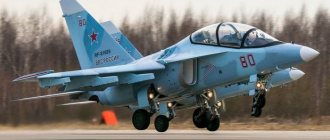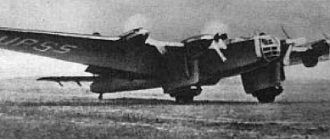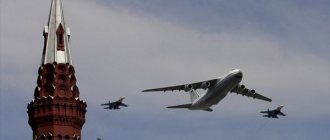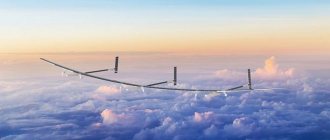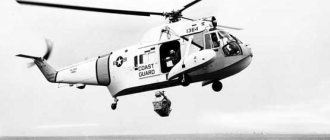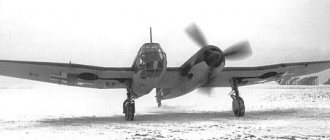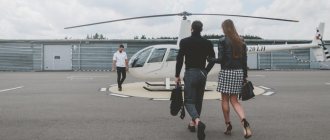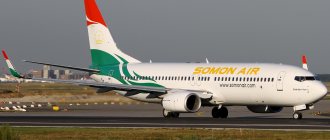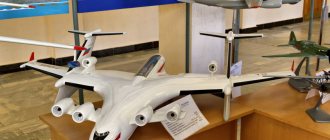Popular modern passenger aircraft in the world
| ✈ Airbus-A310 | ✈ Airbus-A319 | ✈ AirbusA320 |
| ✈ Airbus-A330 | ✈ Airbus-A380 | ✈ Boeing-737 |
| ✈ Boeing-747 | ✈ Boeing-757 | ✈ Boeing-767 |
| ✈ Boeing-777 | ✈ IL-62 | ✈ IL-86 |
| ✈ IL-96 | ✈ TU-154 | ✈ TU-204 |
| Current request | Current request |
Passenger aircraft in the world are divided into:
| Widebody | Narrow-body |
| Regional | Local |
An airplane is designed to move in the air. Another name for an airplane is an airplane. The plane flies with the help of a special power plant, as well as wings. The power plant with which the aircraft flies creates thrust, without which flight would be impossible. And two wings create a special lifting force that keeps the plane at altitude.
Modern airplanes in the world appeared relatively recently, but aircraft that could be used to move through the air were mentioned in the literature of the ancient world. Many scientists claim that in the ancient world people owned serious technologies with the help of which they built aircraft and moved through the air with their help, but these are just theories, and this is not confirmed by facts. The first aircraft that was built in Russia appeared in 1864. The inventor of the aircraft was Russian Nikolai Teleshev.
The main elements of an aircraft are: wing, fuselage, tail, landing gear, aircraft power plant and avionics systems. Thanks to the wing, a special lifting force arises, which is necessary for the aircraft to take off. The fuselage is needed so that there is somewhere to place passengers, pilots, necessary cargo, etc. Also, wings, engines, landing gear and other things important for flight are attached to the fuselage. The tail is used to provide the aircraft with stability, balance and controllability. Another name for tails is aerodynamic surfaces. A system of supports that is necessary so that the aircraft has a takeoff run during takeoff, as well as so that the aircraft has the ability to move on the ground. The power plant consists of two elements - the engine and the propulsion unit. It is designed to create a special power thrust, which allows the aircraft to make forward movements. And on-board equipment systems are a wide variety of equipment with the help of which an aircraft can fly under any conditions.
Airplanes in the world are divided into a huge number of types. They differ in purpose, design, engine type, and so on. There are fighter planes, passenger planes, firefighting planes that are used to put out fires, sports planes, training planes and many others. These planes differ in many ways, but they have the same goal - air travel.
Description of aircraft
home
Railway and air tickets
Technical characteristics of the TU-154M aircraft:
State
- Serially produced since 1984
Dimensions
- wingspan (m) - 37.55
- aircraft length (m) - 48
- height (m) - 11.4
Number of places
- crew - 3
- passengers in the cabin of three classes - 152-158
- in economy class — 176
- maximum - 180
Flight data
- cruising speed (km/h) - 950
- flight range with maximum paid load (with fuel reserves) - 3500
Technical characteristics of the Airbus-319 aircraft:
State
- Serially produced since 1995.
Dimensions
- wingspan (m) - 34.1
- aircraft length (m) - 33.84
- height (m) - 11.76
Number of places
- crew - 2
- passengers in the cabin of two classes - 124-129
- in economy class — 134
- maximum - 138
Flight data
- cruising speed (km/h) - 900
- flight range with maximum paid load (with fuel reserves) - 4910
Technical characteristics of the Airbus-320-110 aircraft:
State
- Serially produced since 1988.
Dimensions
- wingspan (m) - 34.1
- aircraft length (m) - 37.57
- height (m) - 11.76
Number of places
- crew - 2
- passengers in a two-class cabin - 150
- in economy class — 164
- maximum - 179
Flight data
- cruising speed (km/h) - 900
- flight range with maximum paid load (with fuel reserves) - 2960
Technical characteristics of the Airbus-320-210 aircraft:
State
- Serially produced since 1988.
Dimensions
- wingspan (m) - 34.1
- aircraft length (m) - 37.57
- height (m) - 11.76
Number of places
- crew - 2
- passengers in a two-class cabin - 150
- in economy class — 164
- maximum - 179
Flight data
- cruising speed (km/h) - 900
- flight range with (number of passengers) and luggage (with fuel reserves) 150 is 5185 km.
Technical characteristics of the Airbus-330-300 aircraft:
State
- Serially produced since 1993.
Dimensions
- wingspan (m) - 60.3
- aircraft length (m) - 63.6
- height (m) - 16.7
Number of places
- crew - 2
- passengers in the cabin of three classes - 295
- passengers in a two-class cabin - 335
- in economy class — 398
- maximum - 440
Flight data
- cruising speed (km/h) — 925
- flight range with (number of passengers) and luggage (with fuel reserves) 335 is 8980 km.
Technical characteristics of the Airbus-380 aircraft:
State
- Serially produced since 2007.
Dimensions
- wingspan (m) – 79.8
- aircraft length (m) – 73.0
- height (m) – 24.1
- wing area (m2): 845.0
Number of places
- crew – 2
- passengers in the cabin of three classes - 555
- passengers in the cabin of two classes - 644
Flight data
- cruising speed (km/h) – 900
- flight range with (number of passengers) and luggage (with fuel reserves) 380 is 15,000 km.
Technical characteristics of the Boeing 737-300 aircraft:
State
- Serially produced since 1984.
Dimensions
- wingspan (m) - 28.88
- aircraft length (m) - 33.4
- height (m) - 11.13
Number of places
- crew - 2
- passengers in a two-class cabin - 130
- in tourist class - 149
Flight data
- cruising speed (km/h) — 910
- flight range with (number of passengers) and luggage (with fuel reserves) 128 is 4670 km.
Technical characteristics of the Boeing 737-400 aircraft:
State
- Serially produced since 1988.
Dimensions
- wingspan (m) - 28.88
- aircraft length (m) - 36.4
- height (m) - 11.13
Number of places
- crew - 2
- passengers in the cabin of two classes - 146
- in tourist class - 168
Flight data
- cruising speed (km/h) — 910
- flight range with (number of passengers) and luggage (with fuel reserves) 168 is 3870.
Technical characteristics of the Boeing 737-500 aircraft:
State
- Serially produced since 1990.
Dimensions
- wingspan (m) - 28.88
- aircraft length (m) - 31
- height (m) - 11.13
Number of places
- crew - 2
- passengers in the cabin of two classes - 108
- in tourist class - 138
Flight data
- cruising speed (km/h) — 910
- flight range with (number of passengers) and luggage (with fuel reserves) 108 is 5550 km.
Technical characteristics of the Boeing 737-600 aircraft:
State
- Serially produced since 1997.
Dimensions
- wingspan (m) - 34.31
- aircraft length (m) - 31.24
- height (m) - 12.55
Number of places
- crew - 2
- passengers in the cabin of two classes - 108
- in tourist class - 132
Flight data
- cruising speed (km/h) — 925
- flight range with (number of passengers) and luggage (with fuel reserves) 108 is 5910 km.
Technical characteristics of the Boeing 737-800 aircraft:
State
- Serially produced since 1997.
Dimensions
- wingspan (m) - 34.31
- aircraft length (m) - 39.47
- height (m) - 12.55
Number of places
- crew - 2
- passengers in the cabin of two classes - 162
- in tourist class - 189
Flight data
- cruising speed (km/h) — 925
- flight range with (number of passengers) and luggage (with fuel reserves) is 5370 km
Technical characteristics of the Il-86 aircraft:
State
- Serially produced since 1980.
Dimensions
- wingspan (m) - 40.06
- aircraft length (m) - 59.94
- height (m) - 15.81
Number of places
- crew - 3 - 4
- passengers in the cabin of three classes - 314
- passengers in the cabin of two classes - 234
- in economy class - 350
Flight data
- cruising speed (km/h) - 950
- flight range with maximum paid load (with fuel reserves) - 3800
Technical characteristics of the Il-96-300 aircraft:
State
- Serially produced since 1992.
Dimensions
- wingspan (m) - 60.1
- aircraft length (m) - 55.35
- height (m) - 17.57
Number of places
- crew - 2-3
- passengers in the cabin of three classes - 262
- passengers in the cabin of two classes - 235
- in economy class - 300
Flight data
- cruising speed (km/h) - 900
- flight range with maximum paid load (with fuel reserves) - 7500.
Technical characteristics of the Il-96M aircraft:
State
- Serially produced since 1997.
Dimensions
- wingspan (m) - 60.1
- aircraft length (m) - 63.94
- height (m) - 15.72
Number of places
- crew - 2-3
- passengers in the cabin of three classes - 311-318
- passengers in a two-class cabin - 335-342
- in economy class - 376-386
- in the charter version - 413-435
Flight data
- cruising speed (km/h) - 870
- flight range with maximum paid load (with fuel reserves) - 7600.
Technical characteristics of the Yak-40 aircraft:
State
- Mass-produced from 1968 to 1981.
Dimensions
- wingspan (m) - 25
- aircraft length (m) - 20.36
- height (m) - 6.5
Number of places
- crew - 2
- in the charter version - 11, 16 or 20
- maximum - 24-32
Flight data
- cruising speed (km/h) - 510
- flight range with maximum fuel reserve - 1800
Technical characteristics of the Yak-42 aircraft:
State
- Serially produced since 1977.
Dimensions
- wingspan (m) - 34.88
- aircraft length (m) - 36.38
- height (m) - 9.83
Number of places
- crew - 2
- passengers in the cabin of two classes - 104
- in tourist class - 120
Flight data
- cruising speed (km/h) - 730
- flight range with maximum fuel reserve - 4100
Technical characteristics of the ATR-42 aircraft:
State
- Serially produced since 1985.
Dimensions
- wingspan (m) - 24.57
- aircraft length (m) - 22.67
Number of places
- 46
Flight data
- cruising speed (km/h) - 540
- Flight range – 1500 km.
Technical characteristics of the ATR-72 aircraft:
State
- Serially produced since 1985.
Dimensions
- wingspan (m) - 27
- aircraft length (m) - 27.2
- height (m) - 7.6
Number of places
- 68
Flight data
- cruising speed (km/h) - 516
- flight range 2000.
Airbus
As mentioned earlier, Boeing's main competitor in the global market is the European company Airbus, whose central office is located in France. It was founded much later than its American rival - in 1970. The most famous names of the aircraft of this company are A300, A320, A380 and A350 XWB.
Introduced in 1972, the A300 is the very first wide-body, twin-engine aircraft. The A320, manufactured in 1988, was the first in the world to use fly-by-wire control. The A380 aircraft, which first took to the skies in 2005, is the largest in the world. It is capable of carrying up to 480 passengers. The company's latest development is the A350 XWB. Its main task was to compete with the previously released Boeing 787. And this airliner successfully copes with this task, outperforming its rival in terms of efficiency.
Classification of aircraft according to design features according to I. G. Zhitomirsky
According to the aerodynamic design
- Normal
- "Tailless"
- "Duck"
- "Flying Wing"
- Longitudinal triplane (with front and tail horizontal tail) [ source not specified 673 days
] - Tandem (two wings located one behind the other) [ source not specified 673 days
] - Convertible (Tu-144)
By type and number of wings
By number of wings
- Monoplane
- Biplane Sesquiplane (biplane, the area of the lower wing is significantly smaller than the upper one, usually 1.5-2 times [1]).
By wing location (for monoplanes)
- Low-wing
- Mid-ground
- High wing
- Parasol
- Gull
By outer wing set (for monoplanes)
- Cantilever
- Braced monoplane
- Brace monoplane
By outer wing set (for biplanes, triplanes and polyplanes)
- Cantilever
- Rack-mounted
- Brace-and-rack
- Strut
- Strut-and-rack
According to the shape of the wing in plan
Main article: Airplane wing § Wing shape
- Rectangular (constant chord)
- Elliptical
- Trapezoid
- Parabolic
- Round
- Triangular
- Triangular with influx
- Ogival
- Ring
By type of wing sweep
- Straight (sweep angle 0 degrees)
- Forward sweep
- Forward sweep
- Variable sweep
- Variable sweep in flight
Special types of wings
- Arched (Antonov “Product 181”)
By tail
- Normal (1 keel and horizontal tail, hereinafter GO) GO on the fuselage
- GO on the middle of the keel
- T-shaped (GO at the end of the keel)
- spaced two-keel
According to the fuselage design
- Single-body (normal)
- Gondola (fuselageless)
- Truss with gondola
- Double girder with gondola
- Double-fuselage
- Boat
- Load-bearing fuselage
By type and location of landing gear
According to the location of the landing gear
- Single-leg (used on gliders and seaplanes)
- Double-support (bicycle)
- Tricycle with tail support
- with bow support
Depending on the type of engine used, aircraft are classified as
- Steam.
- Muscular.
- Piston (gasoline and diesel internal combustion units).
- Air-jet type (WRD):
Turbojet.
- Air-jet pulse type.
- Air-jet ramjet type.
- Turbofan.
- Solid fuel.
Depending on the number of installed engines, all aircraft are divided into two types, namely: single-engine and multi-engine.
Depending on the location of the engines on the fuselage, there are:
Children about airplanes, outdoor game Airplanes
Game 1. Game “Planes” to reinforce the correct pronunciation of the sound r.
Children make rotational movements with their arms in front of their chests - “start the engines” and say rrrrr. Then they run in a circle, holding their arms straight out to the sides like the wings of an airplane. In the words “Planes to land!” children must quickly “fly” to the airfield and sit on one knee, holding their arms to the sides like wings.
Game 2. Outdoor game “Planes”. In this game, children will become familiar with the commands that the dispatcher gives to the pilot.
While playing airplanes, children will also learn how to act in a singalong manner, as well as run around the playground in different directions without bumping into each other.
Show the children all the play activities.
An adult plays the role of a dispatcher and gives the signal: “Start the engine!”, and the children make rotational movements with their arms in front of their chest. Next, the adult in the role of the dispatcher says: “Taxi for takeoff, take off. Let’s fly!”, and the children spread their straight arms to the sides and fly around the playground.
Further signals are given: “Planes, gain altitude! Planes, descend! (fly higher - lower) Airplanes, turn right (left).”
At the end of the game the signal is given: “Landing! Taxi to the parking lot,” and the children run to the “airfield” (the place where the airfield is located is discussed before the start of the game).
There may be other dispatcher commands: “Fog! Turn around. Fly to an alternate airfield”, “Fly around the thunderstorm”, “You are getting dangerously close. Give way to the plane….(name)"
Please note: In this active game, the child will learn what can happen in flight and how the pilot should react to these events. Children will be able to use this information in their role-playing and directing games with airplanes.
- xMYARPSYZHKH ON SHYYAOXYURYUZHKH X REUMHVEYAINLS NAYAKSFKHBYUMKH YAYULNKERYU UM-2
- xMYARPSYZHH ON REUMHVEYAINLS NAYAKSFHBYUMH YYULNKERYU kH-2
- xMYARPSYZHKH ON REUMHVEYAYNI SCHYAOXYURYUZHHH NAYAKSFKHBYUMHCH srkh lHts-15 (YM.2)
- YNMYARPSYZHKH SHYYAOXYURYUZHKH YYULNKERYU YuM-24 (1978)
- YNMYARPSYZHKH KERMYU SHCHYAOXYURYUZHKH YYULNKERYU YuM-24 (1980)
- nyanaemmnyarkh YNMYARPSYZHHH X REUMHVEYAYNTSN NAYAKSFKHBYUMH srya k-29
- pSYNBNDYARBN ON REUMHVEYAYNI SCHYAOXYURYUZHHH BEPRNKERYU yu-126
- REUMHVEYAYNE NOKHYUMHE YAYULNKERYU UM-2
- REUMHVEYAYNE NOHYUMHE YAYULNKERYU UM-10
- REUMHVEYAYNE NOHYUMHE YAYULNKERYU UM-14
- REUMHVEYAYNE NOKHYUMHE YAYULNKERYU YUM-26. VYuYRE 1
- REUMHVEYAYNE NOKHYUMKHE YAYULNKERYU YUSCHPNYNAPYU I LNRNPNL YUKKKHYANM V-1710-E4
- REUMHVEYAYNE NOKHYUMKHE YAYULNKERYU ANYARNM III(u-20b X yu-20G)
- REUMHVEYAYNE NOKHYUMKHE x-15AHYA YA LNRNPNL l-25B (YMKhTSYU 1)
- REUMKHVEYAYNE NOKHYUMKHE x-15AHYA YA LNRNPNL l-25B (YMKhTSYU 2)
- REUMHVEYAYNE NOHYUMHE x-16 I LNRNPNL l-63
- REUMKHVEYAYNE NOKHYUMKHE x-153 I LNRNPNL l-62 (YMKhTSYU 1)
- REUMKHVEYAYNE NOKHYUMKHE x-153 I LNRNPNL l-62 (YMKHTSYU 2)
- REUMKHVEYAYNE NOKHYUMKHE x-153 I LNRNPNL l-62 (YMKHTSYU 3)
- REUMHVEYAYNE NOHYUMHE YAYULNKERYU xK-10
- REUMHVEYAYNE NOHYUMHE YAYULNKERYU xK-62
- REUMHVEYAYNE NOHYUMHE YAYULNKERYU kYUTZ-1
- REUMHVEYAYNE NOHYUMHE YAYULNKERYU kYu-7
- REUMHVEYAYNE NOHYUMHE YAYULNKERYU kYu-9
- REUMHVEYAYNE NOHYUMHE YAYULNKERYU kYU-11 (YMKHTSYU 1)
- REUMHVEYAYNE NOHYUMHE YAYULNKERYU kYU-11 (YMKHTSYU 2)
- REUMHVEYAYNE NOHYUMHE YAYULNKERYU kYU-11 (YMKHTSYU 3)
- REUMHVEYAYNE NOHYUMHE YAYULNKERYU kX-2
- REUMHVEYAYNE NOHYUMHE BEPRNKERYU lH-1
- REUMHVEYAYNE NOHYUMHE BEPRNKERYU lH-4yu
- REUMHVEYAYNE NOHYUMHE BEPRNKERYU lH-6 (djvu)
- REUMHVEYAYNE NOHYUMHE BEPRNKERYU lH-6 (pdf)
- REUMHVEYAYNE NOHYUMHE BEPRNKERYU lH-6yu (YM.3)
- REUMHVEYAYNE NOHYUMHE BEPRNKERYU lH-6yu (YM.4)
- REUMHVEYAYNE NOHYUMHE BEPRNKERYU lH-10
- REUMHVEYAYNE NOHYUMHE YAYULNKERYU lHts-1 (x-200)
- REUMHVEYAYNE NOHYUMHE YAYULNKERYU lHts-15AHYA
- REUMHVEYAYNE NOHYUMHE YAYULNKERYU lHts-17
- REUMHVEYAYNE NOHYUMHE YAYULNKERYU lHts-21sl
- REUMHVEYAYNE NOHYUMHE YAYULNKERYU oE-2
- REUMKHVEYAYNE NOKHYUMKHE YAYULNKERYU ON-2 X ECN LNDKHTHYUZHHI
- REUMHVEYAYNE NOHYUMHE YAYULNKERYU ON-2BYA
- REUMHVEYAYNE NOKHYUMHE YAYULNKERYU "YAOHRTUIP" IX
- REUMHVEYAYNE NOHYUMHE YYULNKERYU CCC
- REUMHVEYAYNE NOKHYUMHE YAYULNKERYU s-2 I LNRNPNL l-11 (Mr.Twister )
- REUMKHVEYAYNE NOKHYUMKHE YAYULNKERYU YY-12 (djvu)
- REUMHVEYAYNE NOKHYUMKHE YAYULNKERYU YY-12 (pdf)
- REUMKHVEYAYNE NOKHYUMKHE YYULNKERYU y-9 I DBKHTSUREKEL by-107yu (YMKHTSYU 1)
- REUMKHVEYAYNE NOKHYUMKHE YAYULNKERYU y-9 I DBKHTSUREKEL by-107yu (YMKHTSYU 2)
- REUMHVEYAYNE NOKHYUMHE YAYULNKERYU y-9s I DBKHTSUREKEL by-107yu
- SYARPNIYARBN X REUMHVEYAYU SHYAOXYURYUZHKH YuM-26
- sYARPNIYARBN H REUMHVEYAYNE NAYAKSFHBYUMHE BEPRNKERYU lH-8
sTSNKNY MEAYU. 2012
Links
| Airplane on Wikiquote |
| Airplane at Wikimedia Commons |
| Airplane on Wikinews |
- — Aviation photographs. The largest portal directory about aircraft
- — By the names of the OKB creators
- — virtual aviation encyclopedia
- — online museum of aviation history.
- — Russian Air Force: people and planes.
- — L. L. Selyakov.
| Dictionaries and encyclopedias | · · Military Sytin · Small Brockhaus and Efron · · |
| Regulatory control | GND: |
| Aircrafts | |
| Planning |
|
| rotorcraft |
|
| Aerostatic |
|
| Aerodynamic |
|
| Rocket-dynamic |
|
| Other |
|



